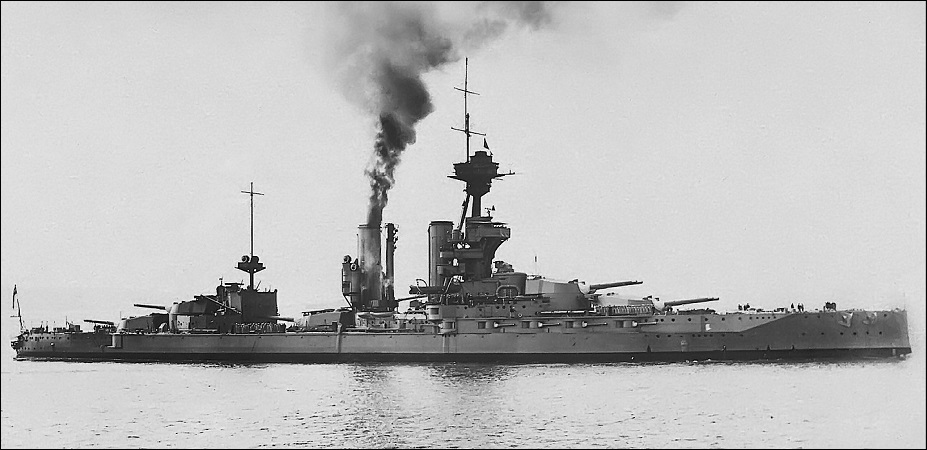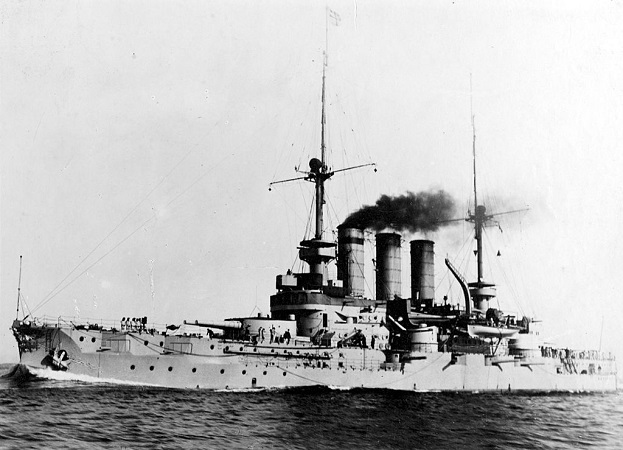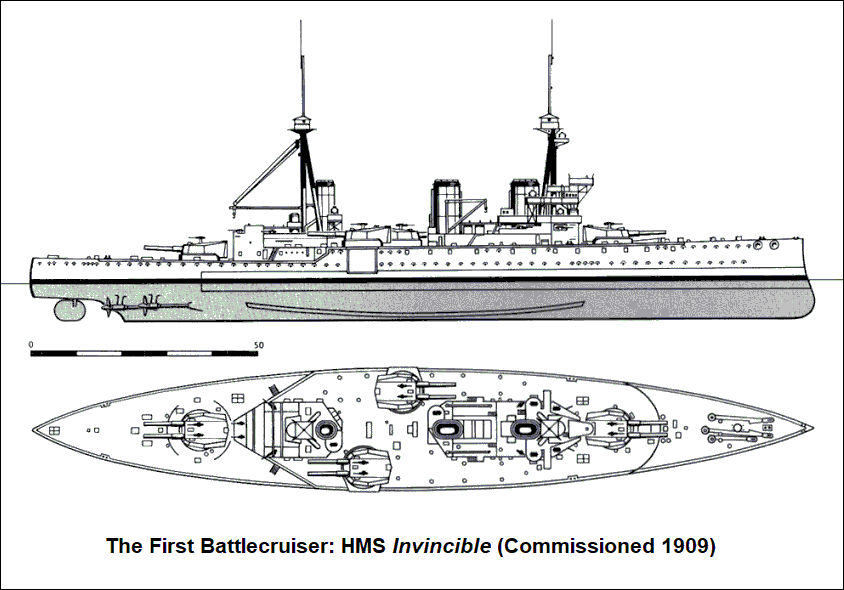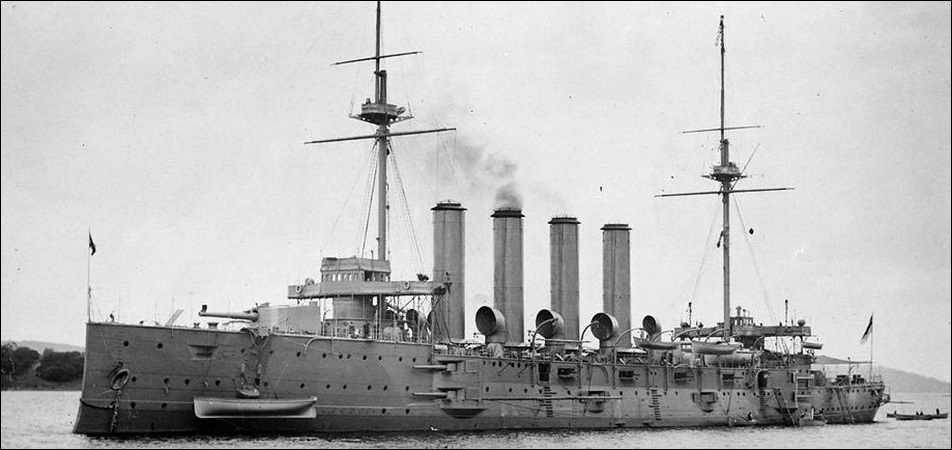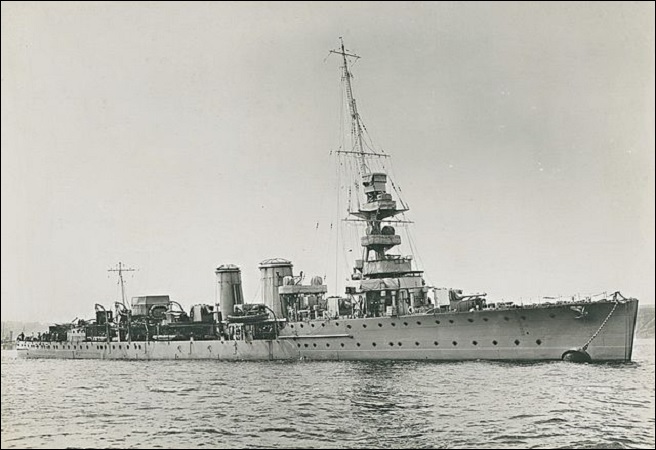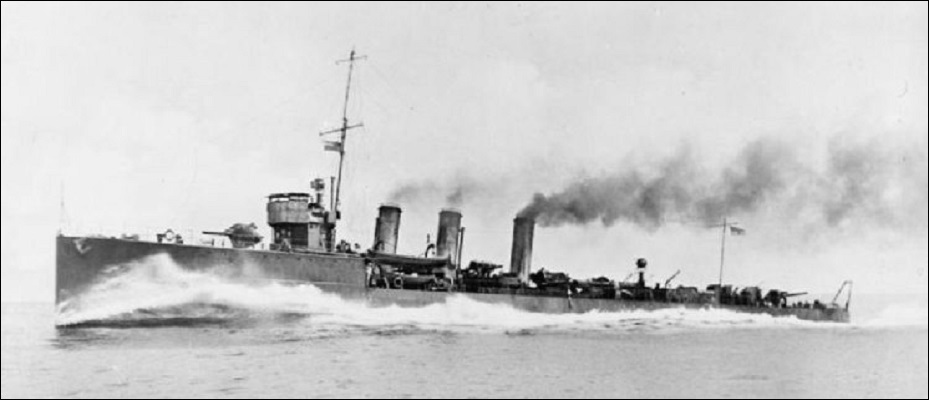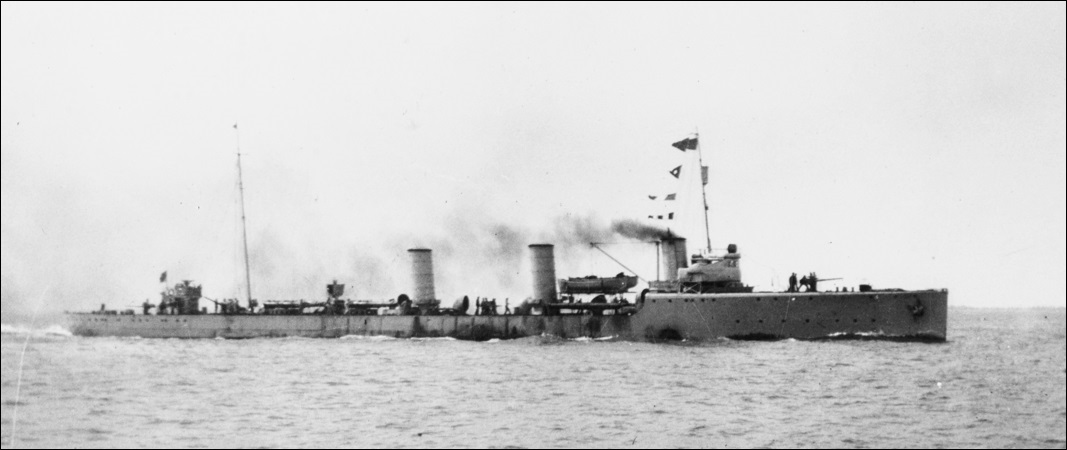♦ THE GREAT WAR ♦Warships of the Great War: Part One
Dreadnought battleship HMS Marlborough of the "Iron Duke" class, commissioned in 1914 (Imperial War Museum)
● ● ●A reasonably succinct overview of the warship classes of the Great War navies necessarily involves some degree of generalization. For the most part reference is made to ships of the British and German navies, and it should be understood that other navies did not match them in all respects. The US Navy, for example, had no modern light cruisers of the type employed by the main antagonists in the North Sea. With that caveat, the following account is broadly applicable to the British, German, American, French, Russian, Italian, Austro-Hungarian and Japanese navies.
This survey is presented in two parts: the first covering major surface warship classes and the second covering submarines, older and minor warships (sloops, gunboats, minelayers, minesweepers, etc.), aircraft carriers and naval auxiliary vessels. Also projected are articles dealing with more specific subjects, e.g. British battleships, German U-boats.
Battleships
The battleship was the largest and most powerful unit of the major Great War navies, and it was primarily intended to fight other ships of its class. Battleships of the period fall broadly into two categories: pre-dreadnoughts, exemplified by the fifty-odd ships constructed for the Royal Navy between 1889 and 1905; and dreadnoughts, ships constructed after 1905 that followed the design principles embodied in the revolutionary HMS Dreadnought.
The typical pre-dreadnought was a ship displacing around 15,000 tons, armed with 4 x 12in guns and 12 x 6in guns, with vertical and horizontal armor up to 12 inches and reciprocating machinery giving a maximum speed of 18 knots. A few later ships of this type were sometimes called semi-dreadnoughts on account of their heavier-caliber secondary armament, e.g. the two ships of the British “Lord Nelson” class, which were armed with 4 x 12in and 10 x 9.2in guns.
A typical pre-dreadnought battleship: the German Navy's SMS Preussen, commissioned in 1905 (Bundesarchiv)
The dreadnought battleship represented a great increase in firepower, speed and armor protection over earlier ships. Dreadnought herself had 10 x 12in guns in five twin turrets, disposed to provide an eight-gun broadside. The secondary armament consisted of 24 x 12-pounder (3in) guns for close-range defense against torpedo craft. Turbine machinery gave a top speed of 21 knots. As the naval armaments race between the great powers accelerated in the decade before the outbreak of war, dreadnoughts grew steadily larger, more heavily armored and armed. In the Royal Navy, battleship main armament progressed from 12in to 13.5in and finally to 15in guns, while 4in and finally 6in guns replaced the puny 12-pounder as secondary armament.
The growing size of battleships is illustrated by a comparison of Dreadnought (commissioned in 1906) to the five ships of the “Queen Elizabeth” class (first unit commissioned in 1914). The former was 527 feet in length with a beam of 83 feet and a displacement of 18,110 tons; the latter was 645 feet in length with a beam of 90 feet and a displacement of 27,500 tons. Compared to Dreadnought’s armament of 12in and 12-pounder guns, the “Queen Elizabeths” carried 8 x 15in and 14 x 6in guns.
Battlecruisers
The battlecruiser was a warship about the same size as a battleship and similarly armed, but less heavily armored and much faster. This type of ship, a development of the armored cruiser (see below) was the brainchild of the Royal Navy’s Admiral “Jackie” Fisher, who served as First Sea Lord (the professional head of the Navy) from 1904 to 1910 and again in 1914-15.
Fisher conceived the battlecruiser as a warship that could either outgun or outrun any opponent, and he thought that it might replace the battleship altogether. This was too radical to be accepted, but Fisher did manage to follow up HMS Dreadnought with a class of ship that embodied his ideas: the three “Invincibles,” commissioned 1908-09. They carried an armament of 8 x 12in guns and 16 x 4in guns, and proved capable of a then-astonishing top speed of 25 knots. But this came at the expense of armor protection. Whereas Dreadnought’s belt (vertical) armor was 11 to 4 inches, Invincible’s was a mere 6 to 4 inches—about the same scale of armoring as an armored cruiser, and altogether too thin to protect against 12in gunfire.
The battlecruisers were intended to serve as “battle scouts” and as a “fast wing” for the fleet; to protect battleships against attacks by enemy armored cruisers; to overtake and sink damaged enemy ships; and to hunt down enemy cruisers and commerce raiders on the sea lanes. In the latter role British battlecruisers proved eminently successful on the single occasion when they were so employed. But thanks to their inadequate armor they were dangerously vulnerable in a fleet action, three being sunk at Jutland.
Battlecruisers were also built for the German Navy, and in many respects they proved to be better fighting ships than their British counterparts. This was due primarily to their armoring, which was almost on a par with the early dreadnoughts. At Jutland they were heavily engaged and suffered extensive damage, but only one was lost: Lützow, which sank only after thirty hits by large-caliber shells.
Armored Cruisers and Light Cruisers
In the late nineteenth century, cruisers fell broadly into three categories: first- and second-class protected cruisers, and scout cruisers. The two protected cruiser types had the same style of armor protection as battleships, albeit on a reduced scale. The difference between them was that first-class protected cruisers were larger and carried a heavier main armament. Scout cruisers had little or no armor. Around the turn of the century first-class protected cruisers came to be classified as armored cruisers, while second-class protected cruisers and scout cruisers eventually merged into the light cruiser class.
A typical armored cruiser: HMS Cressy, name ship of her class, commissioned in 1901 (Imperial War Museum)
Armored cruisers were originally intended for foreign service, the assumption being that they would be more than a match for any enemy likely to be encountered in distant waters. But the naval battles of the Russo-Japanese war, in which the Japanese armored cruisers proved almost as effective as battleships, gave rise to the idea that they had a role in the battle fleet. This was a dangerous misconception that took no account of the rapid progress in battleship design. Just as HMS Dreadnought rendered all earlier battleships obsolete, she made armored cruisers redundant. They were too slow to serve effectively as fleet scouting units and too lightly armed and armored to fight in the battle line. Once the war began the German Navy soon realized that its armored cruisers were useless for warfare in the North Sea and those not lost in action were relegated to second-line duties as training ships, depot ships, etc. The Royal Navy kept its latest armored cruisers in front-line service, with no very happy results: five were torpedoed and sunk by U-boats and another five were lost in action with German surface ships, three of them at Jutland.
The latest armored cruisers in service in 1914 usually had a main armament of 4 or 6 x 8in to 10in guns, supplemented by a secondary battery of 6in guns. The two ships of the British "Duke of Edinburgh" class, for example, had 6 x 9.2in guns in single turrets disposed to provide a four-gun broadside, and 10 x 6in guns in casements.
British "C"-class light cruiser HMS Calypso, commissioned in 1917 (Naval Encyclopedia)
Light cruisers, by contrast, were among the most useful warships of the Great War. The earlier ones, designated as scout cruisers by the Royal Navy, were intended to serve as leaders for flotilla craft (see below). The true light cruiser, introduced into the British and German navies at about the same time, were fleet scouts. This required high speed, armor protection and sufficient gunpower to fight both enemy cruisers and flotilla craft. Ultimately the light cruisers of both navies became quite similar: ships displacing around 5,000 tons, with a top speed of 28 knots, armored both vertically and horizontally, and armed with between six and eight guns of 6in caliber plus torpedo tubes.
Destroyers and Torpedo Boats
These two ship types are usually grouped together as flotilla craft. The early torpedo boats were quite small, with no meaningful gun armament and not particularly seaworthy. Supposedly they were to serve with the fleet as torpedo attack craft, operating in groups called flotillas. Naval opinion in the two decades before the war considered the torpedo boat to be a serious threat to battleships, and to counter them two larger classes of ship were developed for the Royal Navy: the torpedo gunboat and the torpedo boat destroyer. Both were conceived as defensive units with sufficient gunpower to defeat torpedo boats. They also carried torpedo tubes, enabling them to act offensively if necessary. While the torpedo gunboats were not particularly successful, due mainly to problems with their machinery, the destroyer as it came to be called evolved into a most effective warship. Originally it was thought of as a larger edition of the torpedo boat with a heavier gun armament. Soon, however, it became clear that the destroyer’s increased size and seaworthiness made it the ideal flotilla craft for service with the battle fleet.
British destroyer HMS Marmion of the "Repeat M" Class, commissioned in 1915 (Naval Encyclopedia)
The Royal Navy led the world in destroyer development and at the beginning of the war the latest British destroyers were substantial ships, displacing around 1,000 tons, carrying an armament of 3 x 4in guns and four torpedo tubes, and able to steam at over 30 knots. This basic configuration was so successful that it was continued in all subsequent classes built during the war, until a larger type of destroyer entered production in 1917: the “V & W” class. Another British innovation was the flotilla leader, an enlarged destroyer with heavier armament and facilities for the flotilla commander and his staff, the prewar scout cruisers having proved none too suitable for the role. British destroyers also proved capable of mounting the antisubmarine weapons—depth charge racks and throwers—necessary to counter the U-boat threat.
A German fleet torpedo boat of the G-101 class, commissioned in 1914; sometimes classed as destroyers (Bundesarchiv)
In the German Navy, flotilla craft remained smaller and less seaworthy than their British counterparts, though larger destroyers were designed and built later in the war. The US Navy’s enormous destroyer construction program produced ships very similar to the British “V & W” class, though most of them only entered service after the war.
Fuel and Propulsion
In 1914 all larger warships used coal or both coal and oil as fuel. Refueling was therefore a time-consuming and labor-intensive task, requiring virtually the whole ship's company. What was more, coal took up a great deal of space and tonnage. Some smaller warships, such as destroyers, were entirely oil-fired and it was becoming obvious that oil, because of its superior thermal efficiency and ease of handling, was much superior to coal. This was recognized by the Royal Navy when the decision was made to modify the design of the "Queen Elizabeth"-class battleships to burn oil exclusively. The space and weight thus saved enabled the ships to be built with machinery sufficient for a speed of 24-25 knots—three or four knots over standard fleet speed.
In 1914 turbine propulsion was recognized as a much more efficient alternative to the VTE (vertical triple expansion) or reciprocating engines previously used for large warships, and the switch to turbines was one of the key design innovations of HMS Dreadnought. Turbines were more compact and delivered more power compared with VTE machinery, which is why Dreadnought exhibited such a great increase in fighting power though being only marginally larger than the latest pre-dreadnought battleships. The German Navy was slower to adopt turbine propulsion, its first two dreadnought battleship classes having VTE machinery.
● ● ●
Copyright © 2020 by Thomas M. Gregg. All Rights Reserved
BACK to WAR ROOM Front Page
